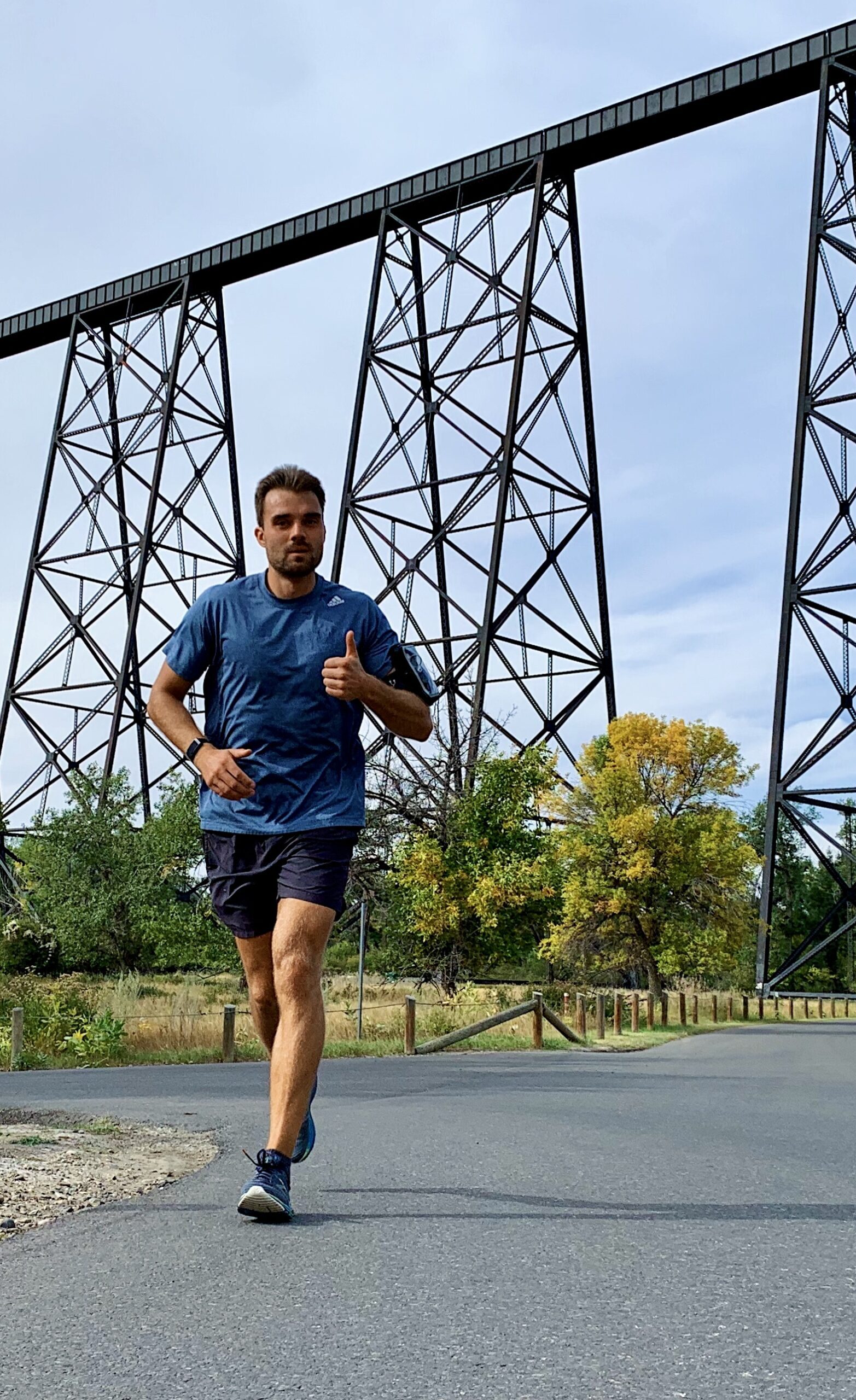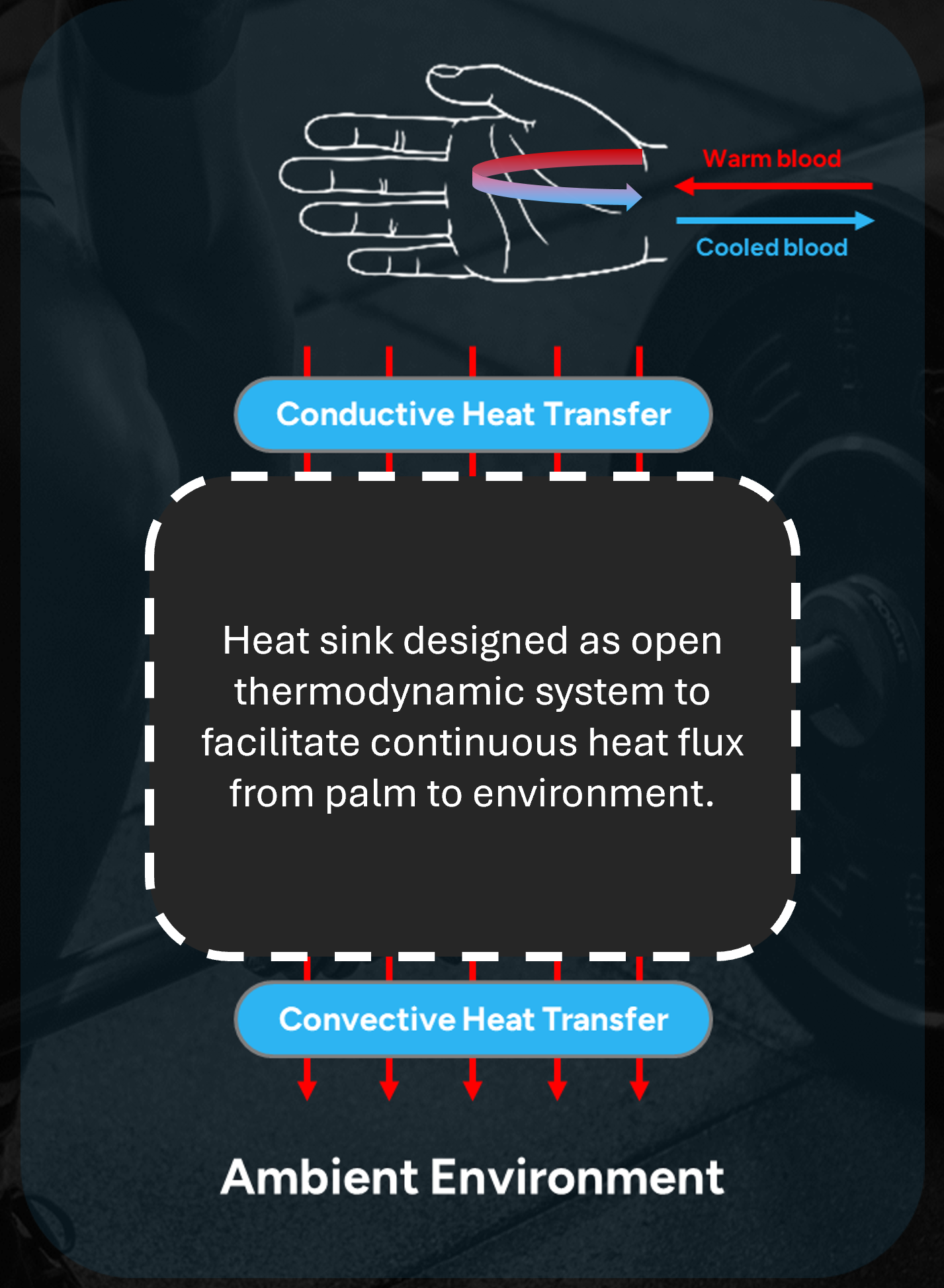Science
The Science of Palm Cooling, Heat Stress, and Performance
Elevated Core Temperature: Every Athlete’s Kryptonite
Elevated core temperature is one of the most significant limiters of athletic performance: physical and cognitive. Core body temperature rises quickly, meanwhile heat dissipation is slow, delayed, and inefficient1. During periods of intense exercise or in hot environments, the nervous system limits output as a defense mechanism to prevent heat stress.2
Heat Stress & Performance
Research suggests that reduction in voluntary activation (neuromuscular failure) is linked with core temperature, NOT exercise-induced fatigue.3 Physiologically, heat stress reduces a person’s ability to achieve maximal metabolic rates during exercise.4 Meanwhile, dehydration from sweat loss increases plasma tonicity and decreases blood volume, both of which reduce heat loss and result in elevated core temperature levels during exercise-heat stress. As a result, during exercise-heat stress, competing metabolic and thermoregulatory demands for blood flow make it difficult to maintain an adequate cardiac output.

Physiological Mechanisms of Thermoregulation
Human cutaneous vasculature can rapidly achieve vast increases in blood flow as large as 16-fold between thermoneutral and hyperthermic conditions, receiving up to 8L/min (50-70% of cardiac output).1 Special vasculature, referred to as Arteriovenous Anastomoses (AVAs), found in the glabrous, non-hairy skin of the body functions as the optimal heat transfer interface on the human body.
Introducing Palmar Cooling
With a very high density of AVAs in the palm and fingers, human hands function as “radiators” under hyperthermic conditions. However, with extreme sensitivity to cold temperatures, temperature must not be too cold or else vasoconstriction will lead to the counterintuitive outcome of heat retention. Therefore, cold water and icing the hands may have detrimental effects on core body temperature cooling.5
Better than steroids?
Research by Stanford Scientists evaluated the benefits of palmar cooling on athletic performance and recovery and determined that palmar cooling was “equal to or substantially better than steroids.”6,7 Researchers across the world at prestigious institutions, including the University of Louisville and University of New Mexico, have continued to demonstrate that palmar cooling has unprecedented human performance enhancement potential.8,9 Palmar cooling is revolutionizing human performance and has already been adopted by Professional and Olympic athletes in the MLB, NFL, NBA, NHL, UFC, NCAA, Premier League, and more.
Kühler [noun]: radiator
The patented KühlerTM device maximizes core temperature cooling with an ergonomic heat sink design that enhances the thermal interface in the palms and fingers. As a result, performance degradation caused by elevated core temperature can be delayed and alleviated – effortlessly.
No ice, no water, no effort.

References
- Périard Julien D., & Racinais Sébastien. (2019). Heat stress in sport and exercise: Thermophysiology of Health and Performance. Springer International Publishing.
- Marino, F. E. (2008). Thermoregulation and human performance: Physiological and biological aspects. Karger.
- Racinais, S., & Oksa, J. (2010). Temperature and neuromuscular function. In Scandinavian Journal of Medicine & Science in Sports (Vol. 20, pp. 1–18). Wiley. https://doi.org/10.1111/j.1600-0838.2010.01204.x
- Institute of Medicine (US) Committee on Military Nutrition Research; Marriott BM, editor. Nutritional Needs in Hot Environments: Applications for Military Personnel in Field Operations. Washington (DC): National Academies Press (US); 1993. 3, Physiological Responses to Exercise in the Heat. Available from: https://www.ncbi.nlm.nih.gov/books/NBK236240/?report=classic
- Walløe, L. (2015). Arterio-venous anastomoses in the human skin and their role in temperature control. In Temperature (Vol. 3, Issue 1, pp. 92–103). Informa UK Limited. https://doi.org/10.1080/23328940.2015.1088502
- Grahn, D. A., Cao, V. H., & Heller, H. C. (2005). Heat extraction through the palm of one hand improves aerobic exercise endurance in a hot environment. In Journal of Applied Physiology (Vol. 99, Issue 3, pp. 972–978). American Physiological Society. https://doi.org/10.1152/japplphysiol.00093.2005
- Grahn, D. A., Cao, V. H., Nguyen, C. M., Liu, M. T., & Heller, H. C. (2012). Work Volume and Strength Training Responses to Resistive Exercise Improve with Periodic Heat Extraction from the Palm. In Journal of Strength and Conditioning Research (Vol. 26, Issue 9, pp. 2558–2569). Ovid Technologies (Wolters Kluwer Health). https://doi.org/10.1519/jsc.0b013e31823f8c1a
- O’Brien, I. T., Kozerski, A. E., Gray, W. D., Chen, L., Vargas, L. J., McEnroe, C. B., Vanhoover, A. C., King, K. M., Pantalos, G. M., & Caruso, J. F. (2021). Use of Gloves to Examine Intermittent Palm Cooling’s Impact on Rowing Ergometry. Journal of strength and conditioning research, 35(4), 931–940. https://doi.org/10.1519/JSC.0000000000003561
- Kwon, Y. S., Robergs, R. A., Kravitz, L. R., Gurney, B. A., Mermier, C. M., & Schneider, S. M. (2010). Palm cooling delays fatigue during high-intensity bench press exercise. Medicine and science in sports and exercise, 42(8), 1557–1565. https://doi.org/10.1249/MSS.0b013e3181d34a53
